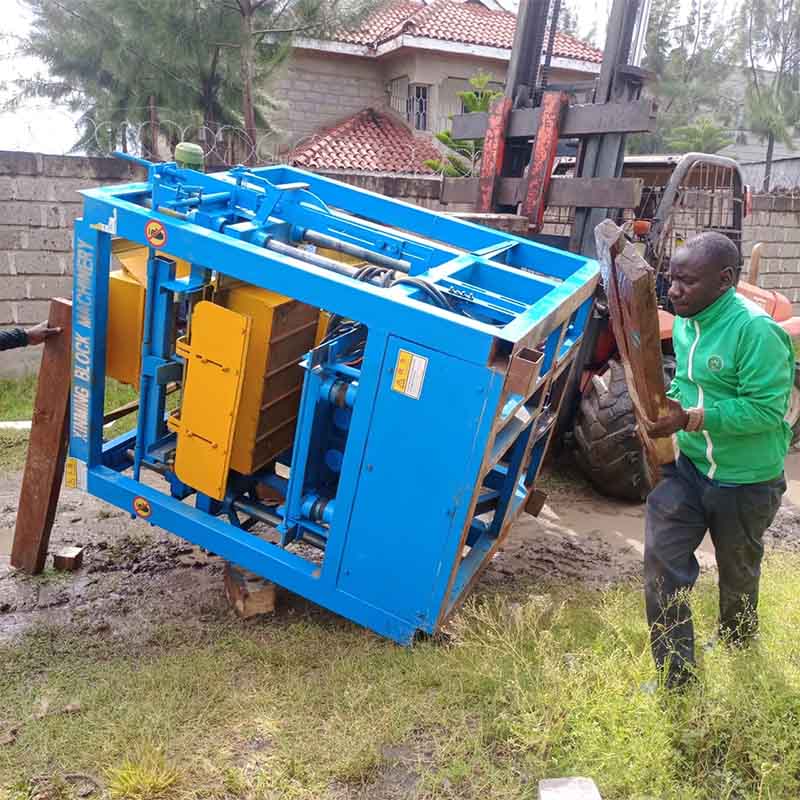
Image source Aiweibrickmachine
Title: Risk Management in Full-Automatic Block Production Facilities
Introduction
Operating full-automatic block production facilities involves various complexities and challenges that require careful consideration. From technological malfunctions to safety concerns, effective risk management is crucial to ensure the smooth and secure operation of these advanced manufacturing units. This article explores key areas of risk in full-automatic block production facilities and outlines strategies for mitigating these risks to promote a safe and efficient working environment.
### 1. **Technological Risks:**
– **Equipment Failure:**
– **Mitigation:** Implement a robust preventive maintenance program, including regular inspections, equipment testing, and timely replacement of worn components. Conduct routine performance checks to identify potential issues before they escalate.
– **Software Malfunctions:**
– **Mitigation:** Regularly update and maintain software systems, ensuring compatibility with hardware components. Implement redundancy measures and backup systems to minimize the impact of software failures. Provide comprehensive training for operators to troubleshoot and address software issues promptly.
### 2. **Operational Risks:**
– **Human Error:**
– **Mitigation:** Develop comprehensive training programs for operators, emphasizing proper operating procedures, safety protocols, and emergency responses. Encourage a culture of vigilance and accountability among staff to reduce the likelihood of errors.
– **Supply Chain Disruptions:**
– **Mitigation:** Diversify suppliers to minimize dependency on a single source. Maintain sufficient inventory levels of critical components to mitigate the impact of supply chain disruptions. Establish alternative logistics routes to ensure a steady supply of raw materials.
### 3. **Safety and Health Risks:**
– **Workplace Accidents:**
– **Mitigation:** Implement stringent safety protocols and provide regular safety training for all personnel. Ensure that safety equipment is readily available and regularly inspected. Encourage reporting of near-misses to identify potential hazards and implement corrective measures.
– **Exposure to Harmful Substances:**
– **Mitigation:** Conduct thorough risk assessments to identify potential exposure to harmful substances. Implement engineering controls, such as ventilation systems, and provide personal protective equipment (PPE). Establish regular health monitoring programs for workers exposed to such substances.
### 4. **Environmental Risks:**
– **Waste Management:**
– **Mitigation:** Implement efficient waste management systems to reduce environmental impact. Integrate recycling programs for materials like excess concrete and explore sustainable practices such as water recycling. Adhere to local environmental regulations and standards.
– **Emissions Control:**
– **Mitigation:** Integrate emission control technologies into production processes. Regularly monitor emissions and conduct air quality assessments. Invest in eco-friendly technologies and alternative binders that reduce the environmental impact of block production.
### 5. **Cybersecurity Risks:**
– **Data Breaches:**
– **Mitigation:** Implement robust cybersecurity measures, including firewalls, encryption, and regular security audits. Provide cybersecurity training for personnel to recognize and report potential threats. Establish backup systems to ensure data integrity.
– **Unauthorized Access to Control Systems:**
– **Mitigation:** Restrict access to control systems based on job roles. Implement multi-factor authentication for critical systems. Regularly update and patch software to address potential vulnerabilities.
### 6. **Market Risks:**
– **Fluctuations in Demand:**
– **Mitigation:** Diversify the product portfolio to cater to different market demands. Monitor industry trends and conduct regular market analyses to anticipate changes in demand. Establish flexible production schedules to adapt to fluctuations.
– **Competitive Pressures:**
– **Mitigation:** Continuously innovate and improve the features of full-automatic block machines to stay competitive. Offer unique value propositions, such as superior technology, customization capabilities, or comprehensive after-sales support.
### 7. **Financial Risks:**
– **Currency Fluctuations:**
– **Mitigation:** Hedge against currency fluctuations through financial instruments. Diversify markets to reduce reliance on a single currency. Monitor economic indicators and adjust pricing strategies accordingly.
– **Cost Overruns:**
– **Mitigation:** Implement robust budgeting and cost-control measures. Regularly review operational expenses and identify areas for cost-saving. Negotiate long-term contracts with suppliers to secure stable pricing.
### 8. **Regulatory and Compliance Risks:**
– **Changes in Regulations:**
– **Mitigation:** Stay informed about changes in local and international regulations related to block production. Establish a regulatory compliance team to monitor and adapt to new requirements promptly.
– **Quality Standards Compliance:**
– **Mitigation:** Implement stringent quality control measures to ensure compliance with international standards. Conduct regular audits to identify and address any deviations from quality specifications.
### Conclusion:
Effective risk management in full-automatic block production facilities requires a proactive and holistic approach. By addressing technological, operational, safety, environmental, cybersecurity, market, financial, and regulatory risks, manufacturers can create a resilient and sustainable operation. Regular risk assessments, comprehensive training programs, and a commitment to continuous improvement are essential components of a robust risk management strategy, ensuring the long-term success of full-automatic block production facilities in a dynamic and competitive industry.
